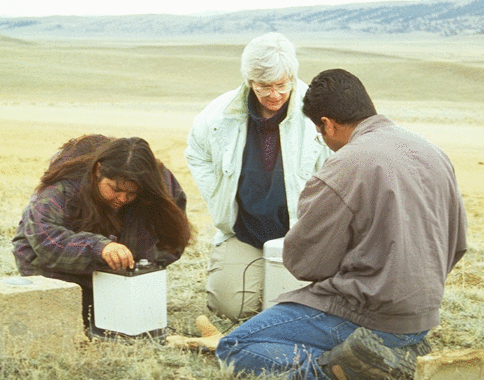pg 1
Geophysical Surveys: Passive Versus Active
Geophysical surveys can be classified into one of two types: Passive and Active.
- Passive geophysical surveys incorporate measurements of naturally occurring fields or properties of the earth. We have already considered passive geophysical surveys in our discussions of gravity and magnetic surveys. In these two cases, the naturally occurring fields are the gravitational and magnetic fields. We simply measure spatial variations in these fields in an attempt to infer something about the subsurface geology. The fields and properties that we are measuring in this class of experiments exist regardless of our geophysical survey. Examples of other earth properties that could be passively measured include radiometric decay products, certain electrical fields, and certain electro-magnetic fields.
| Passive | Active |
 |
 |
- In conducting active geophysical surveys, on the other hand, a signal is injected into the earth and we then measure how the earth responds to this signal. These signals could take a variety of forms such as displacement, an electrical current, or an active radiometric source. The final two survey methods considered in this short course, DC resistivity and seismic refraction, are examples of active geophysical experiments.
Active and passive geophysical surveys each have their own set of advantages and disadvantages.
Resistivity
- Current Flow and Ohm's Law pg 4
- The Fund. Electrical Property is Resistivity, NOT Resistance pg 5
- Resistivities for Common Earth Materialspg 6
- Current Density and Electric Fieldpg 7
- A First Estimate of Resistivitypg 8
- Current Flow From Two Closely Spaced Electrodespg 9
- A Practical Way of Measuring Resistivity pg 10
- Sources of Noise pg 11
- Depth of Current Penetration V.S. Current ElectrodeSpacing pg 12
- Current Flow in Layered Media pg 13
- Variation in Apparent Resistivity: Layered Versus Homogeneous Media pg 14
- Current Flow in Layered Media Versus Electrode Spacing pg 15
- A Second Example of Current Flow in Layered Mediapg 16